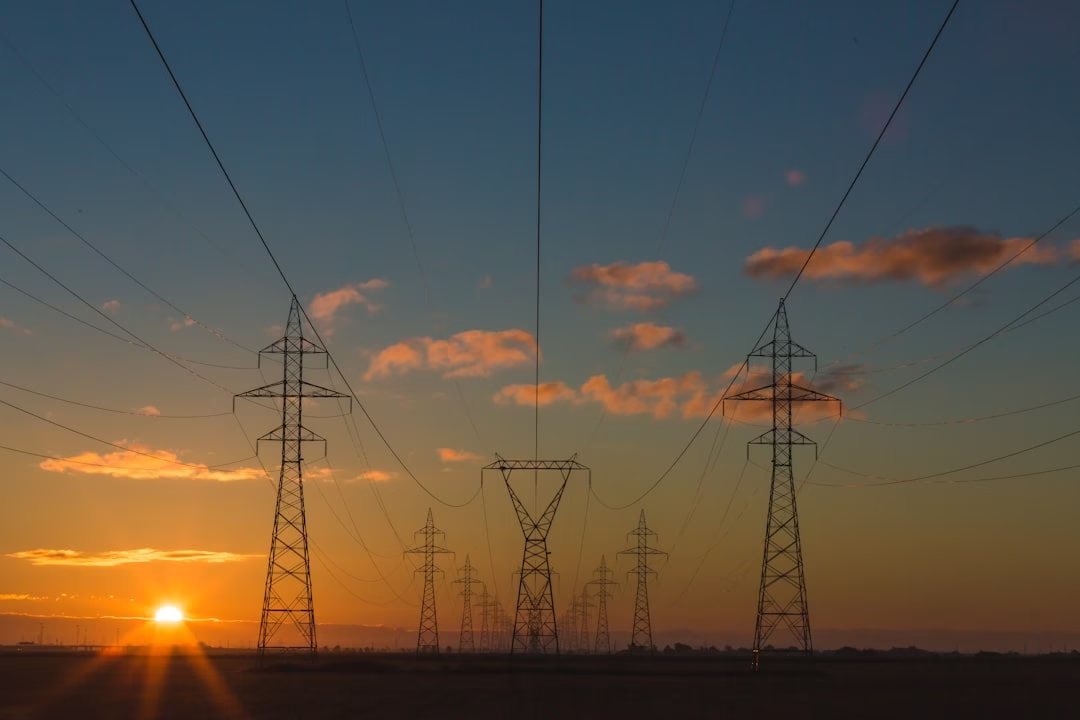Advancements in Energy Research and Development: Innovations Driving the Transition to Renewable Energy and Enhanced Energy Efficiency

As the world grapples with the urgent need to combat climate change, the role of energy research and development (R&D) has never been more critical. Innovations and advancements in energy technology are leading the charge towards a sustainable future, transforming our energy markets and policies. In recent years, we have witnessed remarkable progress in renewable energy sources such as solar power, wind energy, and hydropower, which are vital in reducing our dependence on fossil fuels and transitioning to green energy solutions. This article explores the latest breakthroughs in energy R&D, highlighting key areas such as energy storage and smart grids, which enhance energy efficiency and security while supporting the integration of distributed energy resources. Furthermore, we will discuss the pivotal role of energy R&D in facilitating the global energy transition, moving from traditional fossil fuels to cleaner alternatives like hydrogen energy and bioenergy. Join us as we delve into how these innovations are shaping the future of energy and driving significant investments in the fight against climate change.
- 1. Innovations in Renewable Energy: Paving the Way for a Sustainable Future
- 2. Energy Storage and Smart Grids: Enhancing Energy Efficiency and Security
- 3. The Role of Energy R&D in the Global Energy Transition: From Fossil Fuels to Green Energy Solutions
1. Innovations in Renewable Energy: Paving the Way for a Sustainable Future
The global energy landscape is undergoing a significant transformation as innovations in renewable energy technologies are paving the way for a sustainable future. With the urgent need to mitigate climate change and reduce reliance on fossil fuels, the focus has shifted toward harnessing green energy sources such as solar power, wind energy, hydropower, and bioenergy. This energy transition is not only essential for environmental sustainability but also presents vast opportunities for energy investment and economic growth.
One of the most promising advancements in renewable energy is the development of solar power technologies. Recent innovations, including more efficient photovoltaic cells and solar thermal systems, have drastically improved energy efficiency and reduced costs. Similarly, wind energy has seen remarkable progress with the advent of larger, more efficient turbines that can generate electricity even in low-wind conditions. Offshore energy projects are also emerging as a vital component of the renewable energy mix, offering substantial energy security while minimizing land use conflicts.
Energy storage technologies play a crucial role in the successful integration of renewable energy into the energy markets. Innovations in battery technologies, such as lithium-ion and flow batteries, enhance energy storage capabilities, allowing for better management of energy supply and demand. This is especially important for intermittent energy sources like solar and wind, which require reliable energy storage solutions to ensure a stable energy supply.
Moreover, the rise of smart grids is revolutionizing energy distribution and consumption. These advanced systems enable real-time communication between energy producers and consumers, optimizing energy efficiency and enhancing energy security. By facilitating the integration of distributed energy resources, smart grids are key to the future of energy transportation and management.
As governments and organizations globally recognize the importance of energy R&D, investments in hydrogen energy and carbon capture technologies are also on the rise. Hydrogen energy presents a clean alternative for sectors that are hard to decarbonize, while carbon capture technologies aim to reduce emissions from existing fossil fuel infrastructure. Together, these innovations contribute to a more sustainable energy policy framework, addressing the pressing challenges of energy imports and exports in the context of global energy trends.
In conclusion, the innovations in renewable energy are not just technological advancements; they represent a paradigm shift towards a sustainable energy future. By focusing on energy efficiency, energy storage, and the development of smart grids, we can enhance energy security and support the transition to a low-carbon economy. The integration of these technologies will be imperative as we navigate the complex landscape of energy economics and strive to meet the demands of a rapidly evolving energy market.
2. Energy Storage and Smart Grids: Enhancing Energy Efficiency and Security
Energy storage and smart grids are pivotal components in the ongoing energy transition, aimed at enhancing energy efficiency and security in the face of climate change. As the demand for renewable energy sources like solar power and wind energy rises, effective energy storage solutions become essential to manage the intermittent nature of these technologies. Innovations in energy storage, including advanced batteries and thermal energy storage systems, allow for the capture and utilization of excess energy generated during peak production times, ensuring that it can be used when demand is higher. This ability to store energy not only stabilizes energy markets but also reduces reliance on fossil fuels, thus contributing to overall energy efficiency.
Smart grids play a crucial role in facilitating the integration of distributed energy resources, such as hydropower, bioenergy, and offshore energy, into the existing energy infrastructure. These intelligent systems employ real-time data analytics to optimize energy transportation and distribution, enhancing energy security by minimizing the risk of outages and improving response times during emergencies. By enabling two-way communication between energy providers and consumers, smart grids empower users to make informed decisions about their energy consumption, ultimately leading to a reduction in carbon emissions.
As we navigate the complexities of energy policy and energy economics, the shift towards renewable energy sources is supported by significant energy investment in R&D. This focus is crucial not only for the development of innovative technologies like hydrogen energy and carbon capture but also for ensuring that energy imports and exports align with global energy trends. The collaboration between various sectors, including electric vehicles and smart grid technology, will be vital in creating a sustainable energy future. By prioritizing energy innovations, we can effectively address the challenges posed by climate change and ensure a resilient energy system for generations to come.
In summary, energy storage and smart grids are integral to enhancing energy efficiency and security, driving the global transition towards a cleaner, more sustainable energy landscape.
3. The Role of Energy R&D in the Global Energy Transition: From Fossil Fuels to Green Energy Solutions
The global energy transition from fossil fuels to green energy solutions is a complex and multifaceted endeavor that hinges significantly on energy research and development (R&D). As societies worldwide grapple with climate change and the urgent need to reduce greenhouse gas emissions, energy R&D plays a pivotal role in paving the way for sustainable energy technologies.
Energy R&D drives innovations that enhance energy efficiency and reduce reliance on fossil fuels. For instance, advancements in solar power and wind energy technologies have made these renewable energy sources more competitive in energy markets. Research in energy storage solutions, such as advanced battery technologies, is crucial for addressing the intermittency of renewable sources, thus enabling more reliable energy supply systems. Additionally, the development of smart grids facilitates better energy management and distribution, further optimizing energy consumption and minimizing waste.
Nuclear energy also remains a significant player in the energy transition, providing a low-carbon alternative to fossil fuels. Ongoing research into next-generation nuclear technologies promises to enhance safety and efficiency while addressing concerns surrounding waste management. Meanwhile, innovations in carbon capture technologies can help mitigate the environmental impact of existing fossil fuel operations, making them more environmentally friendly during the transition period.
The rise of hydrogen energy presents another exciting development in energy R&D. Hydrogen, particularly when produced via renewable methods, can serve as a clean energy carrier, supporting energy transportation and storage while contributing to energy security. Furthermore, bioenergy and hydropower continue to play critical roles in diversifying the energy mix, reinforcing the importance of a comprehensive energy policy that embraces various renewable solutions.
Energy investments are increasingly directed toward R&D initiatives that foster the commercialization of these technologies. As countries aim to achieve their climate goals, integrating energy innovations into energy policies will be essential for creating resilient energy infrastructure. The transition to distributed energy systems not only enhances energy security but also promotes local energy production and consumption.
In summary, the role of energy R&D in the global energy transition is indispensable. By fostering innovations in renewable energy, energy storage, and energy efficiency, research initiatives are crucial in moving towards a sustainable energy future. As the world shifts away from fossil fuels, ongoing commitment to energy R&D will be vital for addressing global energy trends and achieving a greener, more sustainable economy.
In conclusion, the advancements in energy research and development are imperative for driving the global energy transition and addressing the pressing challenges posed by climate change. As we have explored, innovations in renewable energy sources like solar power, wind energy, hydropower, and bioenergy are not only paving the way for a sustainable future but also enhancing energy efficiency and security through improved energy storage and smart grids. The shift from fossil fuels to green energy solutions, including nuclear energy and hydrogen energy, underscores the importance of robust energy policies that foster energy investments and support evolving energy markets.
Moreover, the integration of carbon capture technologies and distributed energy systems represents a significant step toward achieving energy security while reducing the environmental impact of energy transportation and consumption. As countries increasingly focus on energy exports and imports, understanding energy economics becomes crucial in navigating the complexities of global energy trends.
Ultimately, continued commitment to energy R&D will be vital in unlocking new technologies that can further bolster the effectiveness and sustainability of our energy systems. By embracing these innovations, we can collectively move towards a greener, more resilient energy landscape that prioritizes both economic growth and environmental stewardship. The future of energy lies in our hands, and the choices we make today will shape the energy solutions of tomorrow.





